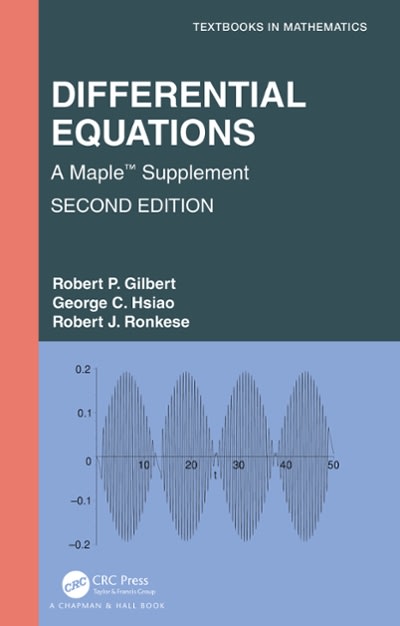Question
2.Probabilities & Bayesrule Considerascenariowhereyouareinchargeofanalysingthedataandmodellingapandemic. Weconsideragivendisease(let'scallit'VIRUS'),whichhasanunknownprevalence in thepopulation(wewillassumethat [0 , 1]istheproportionofthepopulationthathas thedisease).Wewillwritetheprobabilitythatapersonisdiseasedas p ( D )= . (a) Yourlabhasdevelopedafasttestingproceduretodetectthisdisease.Inordertoevaluate theaccuracyandreliabilityofthistest,youhaveconductedtrialson132subjects,and comparedtheresultsofyourtestwithperfectlyaccurate(supposedlymoreexpensive) diagnostic.Theresultsofthosetrialsarecollatedinthefollowingtable: positive negative diseased 28
2.Probabilities & Bayesrule
Considerascenariowhereyouareinchargeofanalysingthedataandmodellingapandemic. Weconsideragivendisease(let'scallit'VIRUS'),whichhasanunknownprevalencein thepopulation(wewillassumethat[0,1]istheproportionofthepopulationthathas thedisease).Wewillwritetheprobabilitythatapersonisdiseasedasp(D)=.
(a)Yourlabhasdevelopedafasttestingproceduretodetectthisdisease.Inordertoevaluate theaccuracyandreliabilityofthistest,youhaveconductedtrialson132subjects,and comparedtheresultsofyourtestwithperfectlyaccurate(supposedlymoreexpensive) diagnostic.Theresultsofthosetrialsarecollatedinthefollowingtable:
positive negative
diseased 28 3
healthy 12 89
(i)UsingBayesformula,andthetrialdatainthetable,provideanestimateoftheprobabilities:
p(D|T),thatasubjectwhotestedpositiveistrulydiseased;and
p(D|T),thatasubjectwhotestednegativeisactuallydiseased. [4]
(ii)Takingintoconsiderationthetestaccuracyandreliabilityasevidencedinthetrials, wouldthistestbeappropriateforthefollowingsituations:
1.regulartestingofpeopleworkingwithvulnerablepopulations;
2.decidingonwhethertoadministeratreatmentwithseveresideeffects;or
3.applyingtothewholepopulationtofindalldiseasedindividuals (justify youranswers).
[3]
(iii)
Youadministeratestwithprobabilitiesp(D|T)=0.7andp(D|T)=0.01toasample of1000subjectsdrawnrandomlyfromthepopulation.Thetestreturns980negatives and 20positives.
Fromthisdata,calculateanestimateoftheprevalencep(D)explainingyourreasoning.
[4]
(b)Letusconsiderthatyouareexperimentingwithavaccineagainstthedisease.Youhave 1000subjectsingroupAwhotakethevaccineand1000ingroupBwhotakeaplacebo.Let usassumethatyoutestthesubjectsinbothgroupsdaily,andafteronemonthyouobtainthe followingresults:2subjectsfromgroupAtestedpositiveatsomepointduringthemonth, and40subjectsfromgroupB.Inthispartwewillassumethatweareusingatestwiththe followingstatistics:
theprobabilityofhavingthediseaseiftestedpositiveisp(D|T)=0.7
theprobabilityofhavingthediseaseiftestednegativeisp(D|T)=0.01.
(i)Accountingforthelimitationsofthetest,howmanysubjectsingroupAandBdidpossiblycatchthediseaseduringthismonth? [5]
(ii)Theefficacyofavaccineistypicallycalculatedas
p(D|V ) p(D|V )
Ev =
p(D|V)
Useyourresultsfromabovetocalculatetheefficacyofthevaccine.Discusswhat wouldhappenifyourtestwerelessaccurate:Whatwouldhappenifp(D|T)wouldbe lower?Ifp(D|T)wouldbehigher? [4]
Step by Step Solution
There are 3 Steps involved in it
Step: 1

Get Instant Access to Expert-Tailored Solutions
See step-by-step solutions with expert insights and AI powered tools for academic success
Step: 2

Step: 3

Ace Your Homework with AI
Get the answers you need in no time with our AI-driven, step-by-step assistance
Get Started


